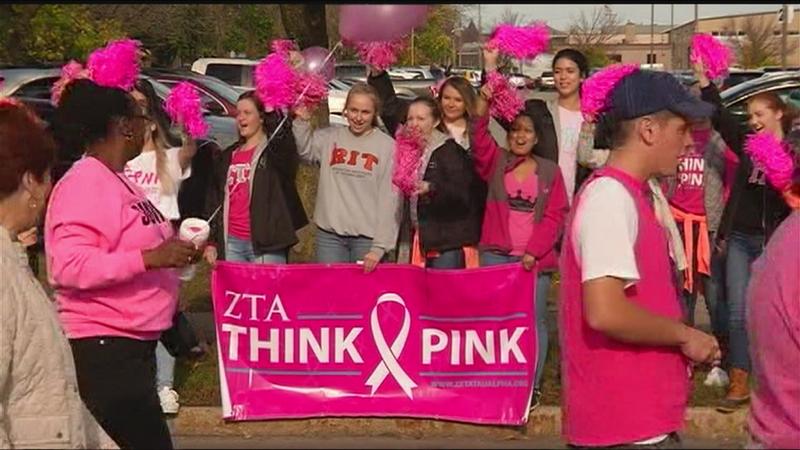Deanna’s Discoveries: Addressing the mammography guidelines controversy
[anvplayer video=”4771780″ station=”998131″]
ROCHESTER, N.Y. (WHEC) — Friday, Oct. 18 was National Mammography Day, and there’s little doubt that mammograms save lives because they allow us to catch breast cancer when it’s very small. But for a decade there’s been enormous controversy concerning when to start screening. So, Deanna Dewberry went to Elizabeth Wende in Rochester for answers.
Dr. Stamatia Destounis, a radiologist at Elizabeth Wende Breast Care, showed us a 3-D mammogram in which a tiny tumor was hidden behind a fluid-filled cyst. Dr. Destounis caught the cancer at stage one because this patient came in for annual mammograms.
But the question that has plagued women for a decade is when to begin screening. Routine mammography began in the ’80s and early studies showed dramatic results.
"[For] women who started getting screened by the time they’re 40, there is a mortality reduction by as much as 40%," said Dr. Destounis.
But studies also show that breast cancer risk increases with age. So in 2009, a government group called the U.S. Preventative Task Force (USPTF) recommended starting mammograms at age 50.

That recommendation was met with widespread criticism from cancer patients, advocates, oncologists, and radiologists like Dr. Destounis.
"Twenty percent of the breast cancers that we find every year are in women in their 40s,” said Dr. Destouni, referring to the percentage of patients currently seen at Elizabeth Wende.
The USTPF stands by its recommendation of beginning screening at 50, arguing that screening earlier unnecessarily exposes women to radiation at a time they’re less likely to develop cancer. The USTPF also argues mammography also presents a risk of false positives forcing women to undergo unnecessary biopsies, additional screening and undue stress.
But Dr. Destounis argues that the amount of radiation exposure during a mammogram is minimal, less than the amount of radiation a traveler is exposed to during a flight from New York to California.
The American College of Radiology, as well as the Society of Breast Imaging, recommend that women of average risk begin annual mammograms at age 40.
"We go by the premise that the smaller it is, the less of a chance it will be a big problem for the woman later on," said Dr. Destounis.
Remember these are guidelines for women of average risk. If you have a family history of breast or ovarian cancer, you should talk to your doctor about screening earlier. New York law mandates that insurers pay for these screenings.
On Saturday, Oct. 19, Elizabeth Wende is offering free screenings for uninsured women. Rochester Regional Health is having its Mammos and Makeovers event where they offer a free makeover, mocktails, a chair massage and hors d’oeuvres following your mammogram.